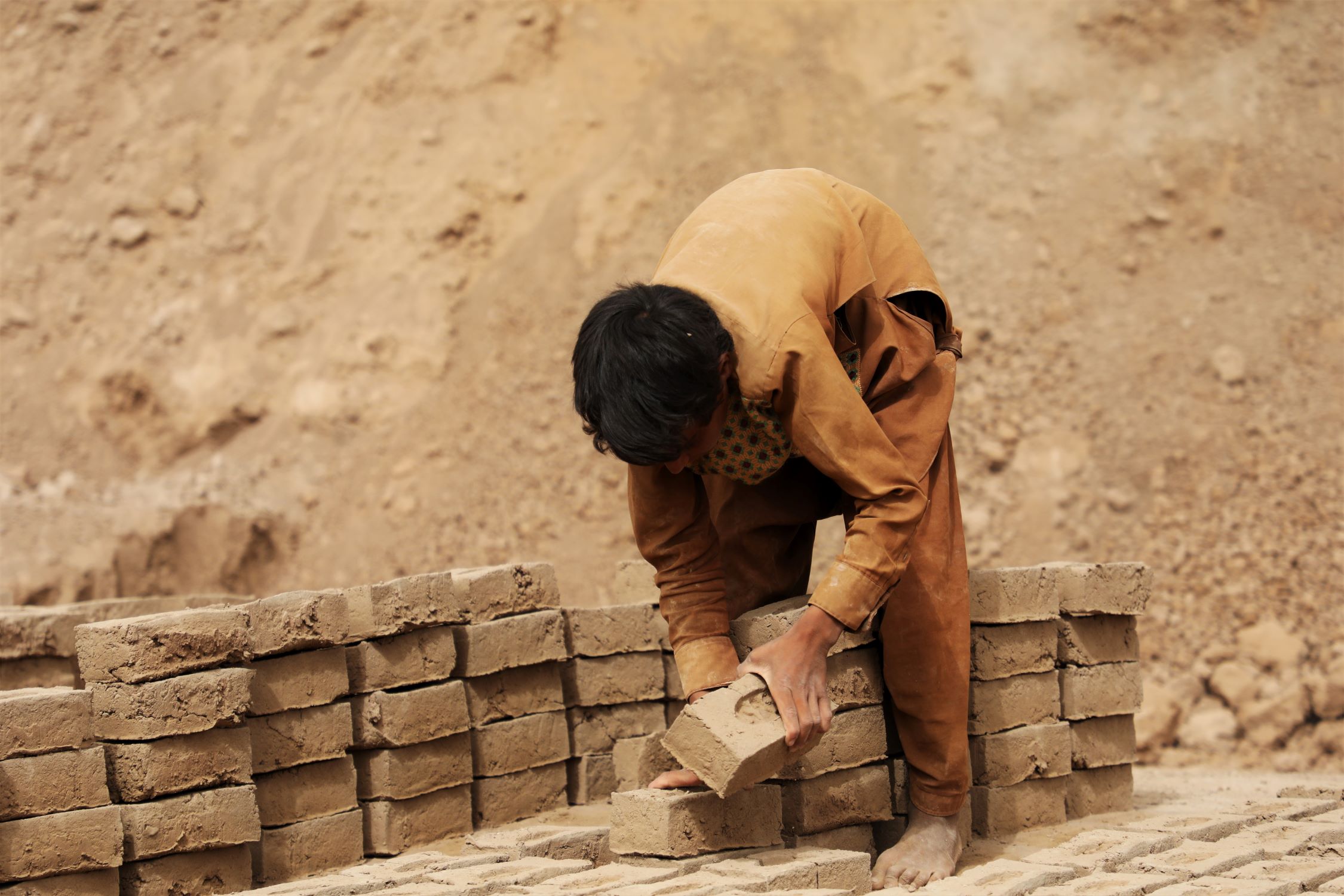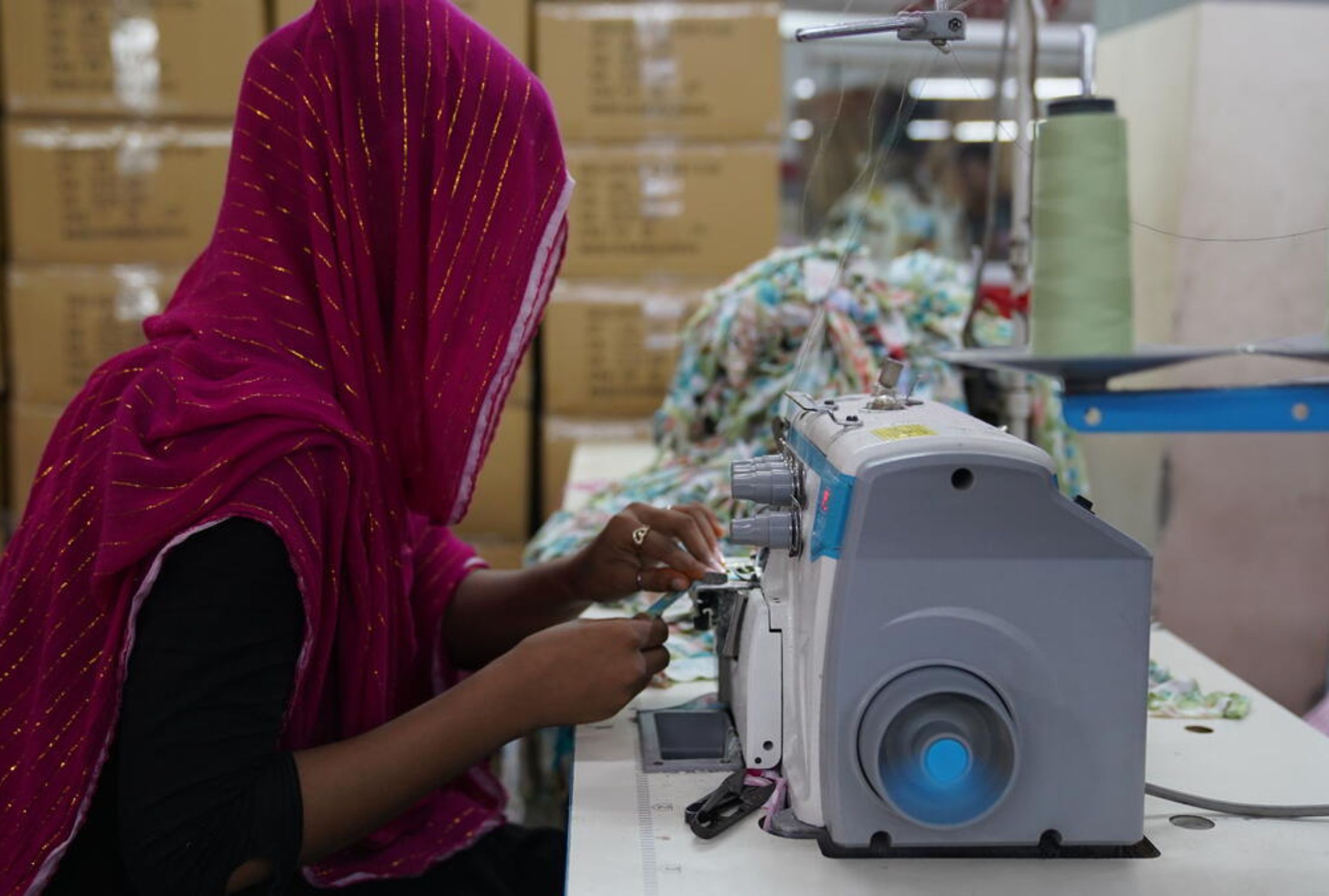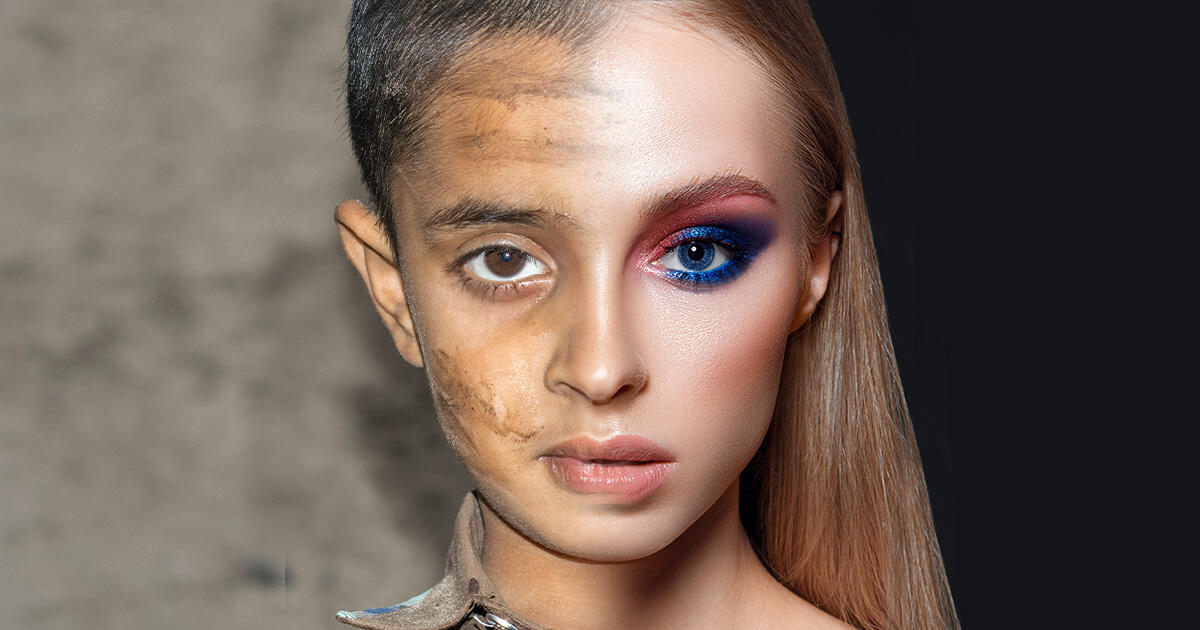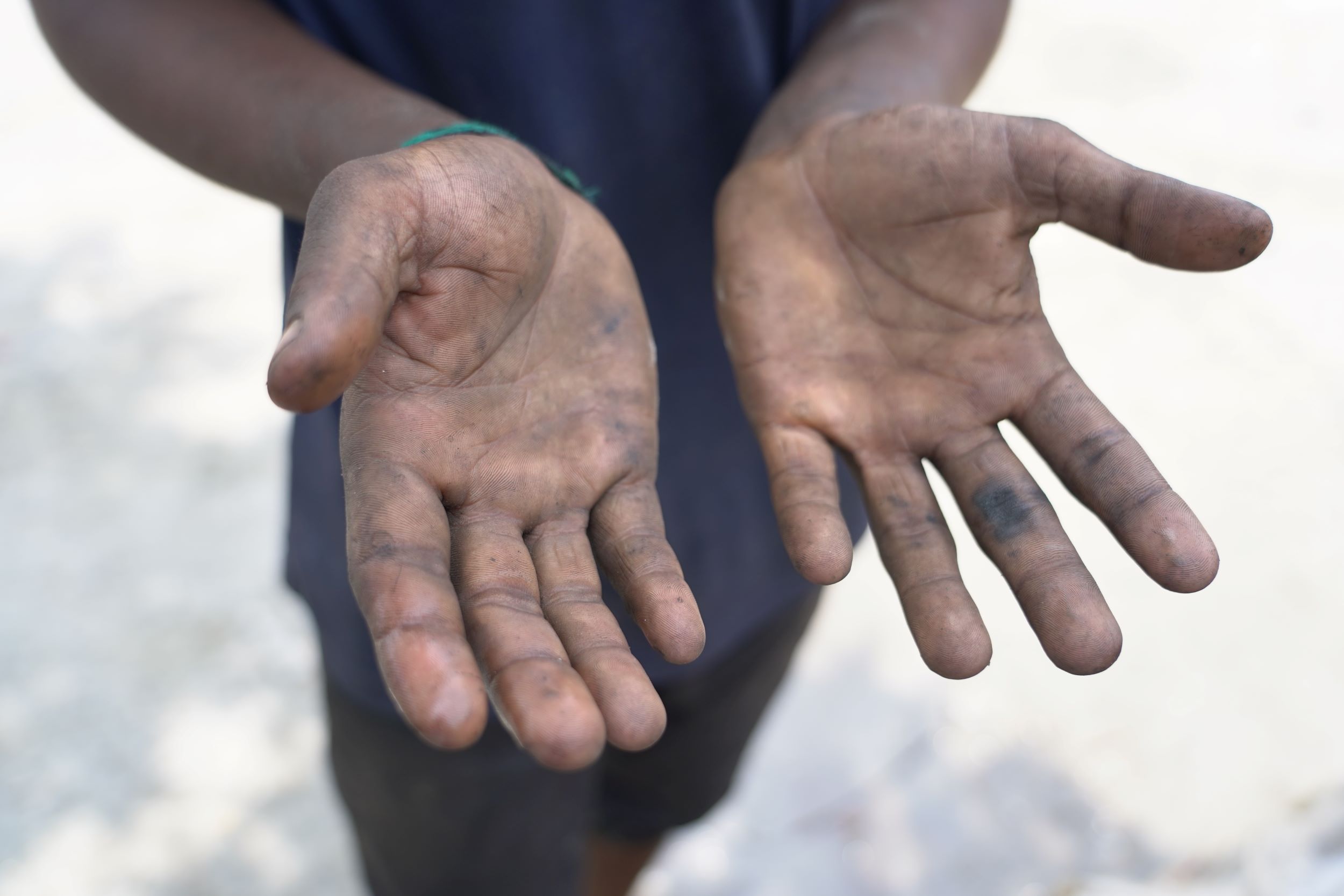
What can we do to help child labourers?
Working in partnership to save children from debt bondage
By Aimyleen Gabriel, World Vision’s Senior Child Protection Adviser
Imagine your 14-year-old son getting up early - to face the dangers of mining in order to help feed your family. This scenario isn’t an isolated incident by any means. According to the United Nations, 160 million children are involved in child labour across the world – while 79 million of them are engaged in hazardous work.
Child labour is known to have harmful impacts on children’s physical and mental health, learning and protection. At World Vision we’re not only helping families with food, water, education, climate smart farming, and health. Child protection is one of the most important things we’re doing.
As well as working with communities to understand the dangers of child marriage and child labour, we have also been leading a partnership with other organisations to discover how we can end child exploitation. Though our joint four-year project is now at an end, we will take what we have learned to underpin our ongoing work against child exploitation.

The Partnership Against Child Exploitation (PACE) implemented a range of child-focused initiatives whilst generating evidence of how to effectively reduce child labour in the most dangerous places in the world.
Together with partners, we trained children and their communities to understand the risks of child labour, raised awareness of children’s rights - and supported youth-led advocacy to challenge social norms around child labour.
We also worked with community child protection groups to strengthen reporting and referral of children at risk. PACE supported children to stay in or return to school or find alternative education, as well as enabled youth and their caregivers to find alternative livelihoods so children do not end up in child labour.
World Vision and partners engaged various stakeholders like government agencies, law enforcement authorities and the local media to raise public awareness and support to improve the implementation of child labour laws. To engage the private sector, PACE led an innovative mapping of child labour and advocated with businesses at local, national and international levels to channel their insights to broader protection of children.
When we started PACE we knew we couldn’t do it alone. Part funded by the Foreign Commonwealth and Development Office, we brought together organisations from the private sector, a research agency, and the worlds of academia and media, as well as other NGOs.

The partnership directly reached over 24,000 people, with a further 400,000 being positively impacted by achievements in Central African Republic, Democratic Republic of Congo and Ethiopia.
Key achievements include almost 8,500 children being re-integrated into school and over 1,600 youth trained on vocational skills.
We saw a positive trend away from exploitative working conditions and more support to children’s education. There was also an increase in community awareness on the importance of protecting children from the harmful impact of child labour.
Evidence in Ethiopia showed a 40% increase in children working for their households and simultaneously a 17% decrease in those working for pay outside of the home. School enrolment increased, as did household resilience. Children told us that they noticed improvement in their health and were more satisfied with life.
The findings from our research and learnings from the programme are valuable contributions to the global efforts to tackle child labour. World Vision is promoting these learnings through its technical and advocacy networks at local, national and international levels.

Working in partnership to save children from debt bondage
My colleague Philip Wilkinson, a PACE Senior Programme Manager, visited Ethiopia at the end of the project and here shares stories highlighting the impact of PACE - especially on children sold into debt bondage. This is the practice where children are being used to help pay off outstanding debts. He says:
“Sadly, when Abai’s [not his real name to protect identity] father died, the family lost their main provider. As the eldest son, Abai was sold into debt bondage at just nine-years-old to provide for his family. PACE chose this family, living in Amhara, due to their extreme poverty and vulnerability. They received income-generating support, which included training in animal husbandry, business skills, livestock (sheep) and start-up capital (12,000 Birr/ £196). Through shrewd buying and selling of further livestock, including cows, they managed to turn their lives around.
“The family also benefitted from being part of the World Vision / PACE savings groups, which enabled them to buy better feed, and, thanks to their new income, two siblings now attend school. At the time PACE started helping, Abai was 15 and had been supporting his mother, an elder sister, and two younger siblings for six years. The team had discussed enrolling Abai in school but he preferred to learn animal husbandry and business skills.
“Meeting this family was such a highlight: to see first-hand how Abai and his family have managed to transform their lives, with a little help from PACE.”
“Children reborn”
The Village Savings and Loans Association (VSLA) in Ghondar Zuria - formed through PACE - has been transformational, saving three children from debt bondage. Members invested their savings in small scale enterprises, which grew. Three people had made the heart-wrenching decision to sell one child each into debt bondage - but thanks to income generated through VSLA, all three were brought back home and helped to return to school.
As the VSLA leader put it, “three children were reborn”. She wished that, “more communities could benefit like we have.”
The group now has enough capital to join a government run savings scheme, proving that initiatives like this are sustainable after the programme closes.
PACE also supported Muslim leaders in their aim to protect children. This faith group brings together religious leaders of mosques, meeting regularly to provide an informal child protection network. The group aims to prevent early marriage and trafficking of children from Ethiopia into Sudan and on to other countries. They educate congregations and act as a child protection watch group.

Research findings
Coordinating the various programmes has been vital - such as improving livelihoods, supporting children to return to school or alternative learning / skills training, improving implementation of child labour laws, and promoting change in social norms and business practices.
Seeing child labour from the eyes of children and their families is crucial to help design context-specific interventions. We found that child labour is not always forced upon children. Sometimes, it is seen as a positive decision, or is unavoidable due to lack of social safety nets and opportunities. Parents often saw work as a safer option than more risky activities, such as joining armed groups, and children said they wanted to work to support their families and learn.
The social norms in communities (child labour is “normal”) and of those who employ children (giving work to children “helps” their families) cannot be underestimated. Changing social norms, which takes time, must be accompanied by alternatives to child labour, improved implementation of policies and strengthened community protection mechanisms. We also found that it is crucial to involve influencers like teachers and religious leaders.
Understanding local power dynamics, and supporting community members with tools and skills, is key in protecting children from child labour. When communities led awareness, there was greater understanding and clear shifts in people’s views. Child-led activities, in some instances, also resulted in improved confidence of children. “The reinforcement of the local protection structure… is a step forward for protection. People can abuse children, but it is more difficult in this village because immediately it will be denounced and prosecuted.” – Local authority, DRC
To sustain the impacts, further work is needed to create an enabling environment for interventions to succeed. This includes addressing insecurity, instability, weak governance and poor resourcing in places where child labour is rife. Children and communities must continue to be at the centre of all efforts to tackle the issues – this means ensuring that their views shape the programmes, and that they play a central role in protecting children from the risks as well as in evaluating progress.
Safeguarding these conditions is not the job of one government or organisation alone – eradicating child labour involves you, me and our wider communities.
Sign up to hear more about World Vision’s work and how you can change the lives of children around the world.



